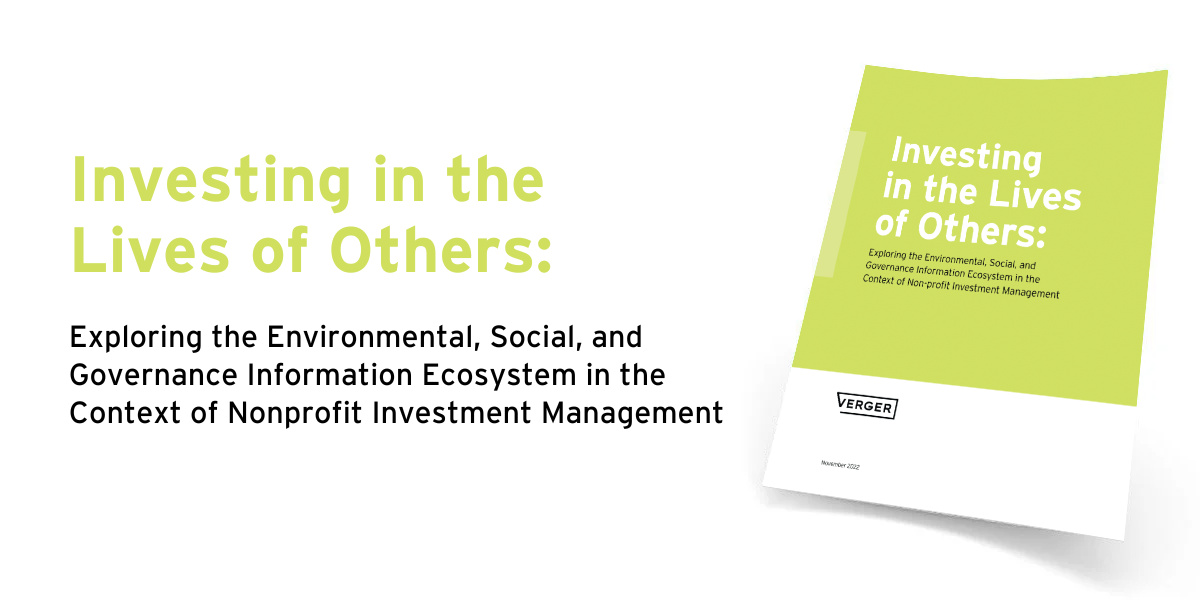At Verger we are committed to Engagement – an ongoing dialogue with our clients and industry peers around continued evolution and growth.
As part of this dialogue, we at Verger seek to understand how the managers with whom we invest client capital are navigating increasingly complex investment risks and opportunities, including any related to Environmental, Social, and Governance (ESG) factors.
Through the course of our ongoing engagement with current and prospective portfolio managers, we have noticed more of them pointing out how the increasing availability of Environmental, Social, and Governance (ESG) information impacts their investment decision making processes.
Recently, Verger published a White Paper – the second in our Investing in the Lives of Others series – in which we map the current ESG information landscape and explore potential competitive advantages that can accrue to managers who understand the terrain.
Here, we’ve taken some time to summarize this latest White Paper: The ESG Information Ecosystem for Non-Profit Investment Management.


